AO Edited
Shipwreck
On a secluded beach is one of the few shipwrecks left on the shores of Mauritania.
The coastline of Mauritania runs for 700 kilometers, from Cape Nouadhibou to the delta of the Senegal River. With such an extensive coastline, it would stand to reason that multiple shipwrecks should be found on its shores. The very opposite is true. One notable exception was Nouadhibou, which was once considered the largest ship graveyard in the world, but even that belongs to the past. The implementation of government programs and incentives to clean up the waters in Nouadhibou enabled regular citizens to buy individual shipwrecks and take them apart for scrap metal. These initiatives worked, and the largest ship graveyard in the world is no more.
Moving south of Nouadhibou, hundreds of kilometers of sandy beach unfold. Along this stretch, many fishing villages can be found, alongside a handful of small harbors and one industrial port in Nouakchott. It is quite common to find small wooden boats in different degrees of decay near the villages, but it is rare to find a large metal boat on the shores. One of these rare findings is near the town of Tiguent, 100 kilometers south of Nouakchott.
The reason for the existence of this shipwreck is due to its remoteness and its advanced stage of decay. The remains of the body suggest that the ship must have been about 70 meters in length and 14 meters in width. Most of the hull is buried under the sand, with only the upper deck poking out, and even this is partially submerged by the water at high tide. Sections of the engine are visible, especially a line of cylinders. Sharp metal shards barely make it to the surface, but they can inflict deep cuts if stepped on without wearing protective shoes. As for the identity or the age of the ship, there is nothing on record.
Know Before You Go
Approaching Tiguent in a southbound direction, a well-marked dirt road branches off to the right of the N2 Road. It is 15 km to reach the beach. Sharp corrugation, deep ruts, and patches of sand contribute to a varied but challenging ride.
The rare cars that pass by are either 4x4s or battered shared taxis that ply this route on a daily basis. The taxi drivers know exactly how to tackle the most challenging sections of the road, but it is not recommended to attempt driving a sedan along this road. A viable alternative is a motorbike—experience in off-road riding can come handy.
Once on the beach, it’s another 6 kilometers heading south. There is no road or track, and there are no shops, buildings, people, or shelters along the coastline. The best way to cover this distance is by walking along the shoreline.
The shipwreck can best be appreciated at low tide.
Plan Your Trip
The Atlas Obscura Podcast is Back!



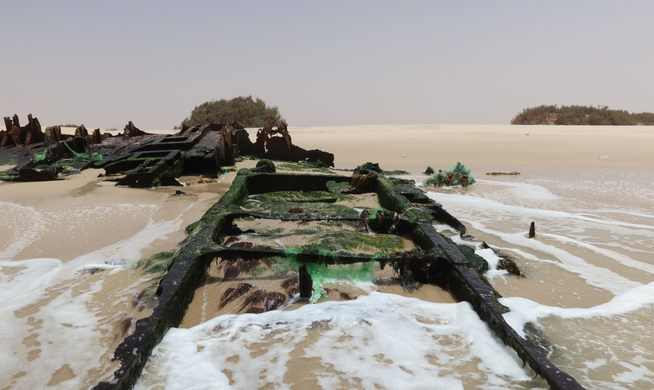
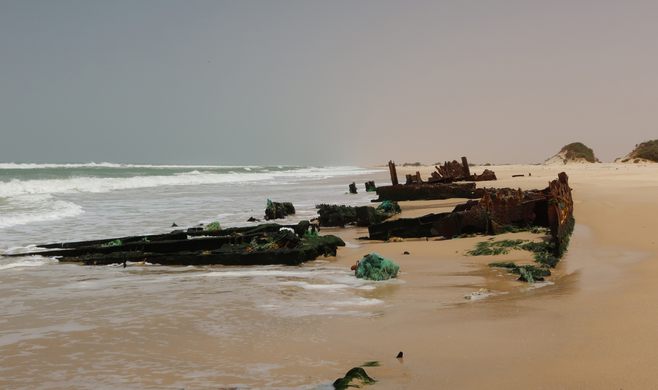
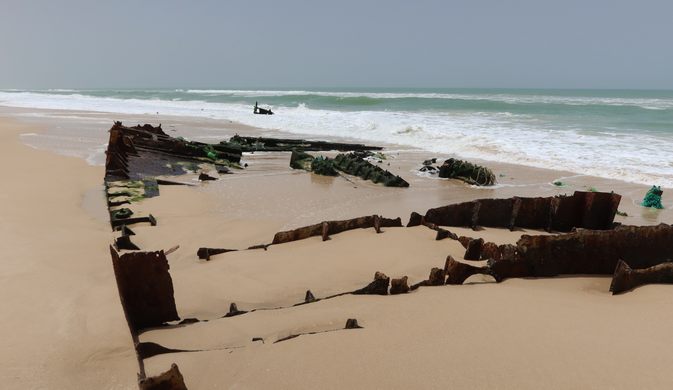
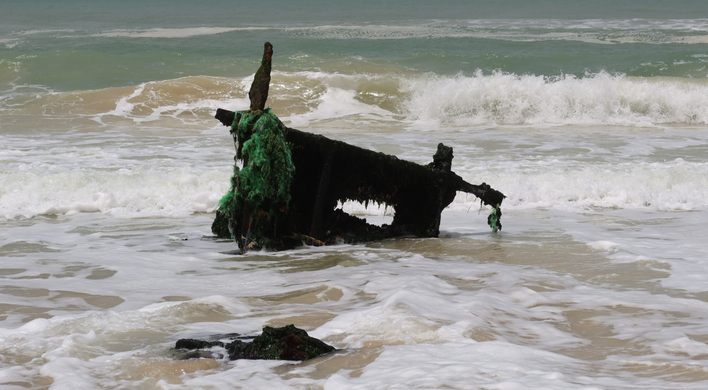
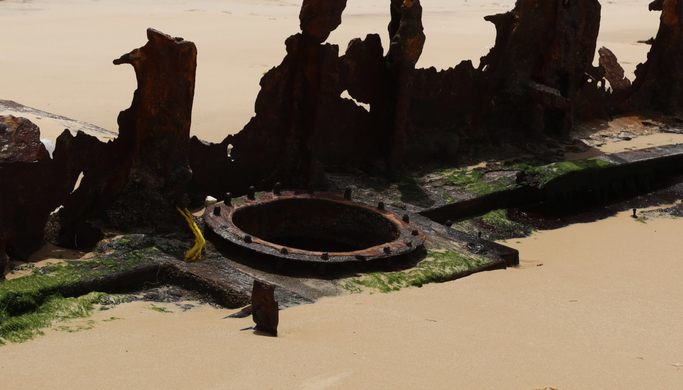
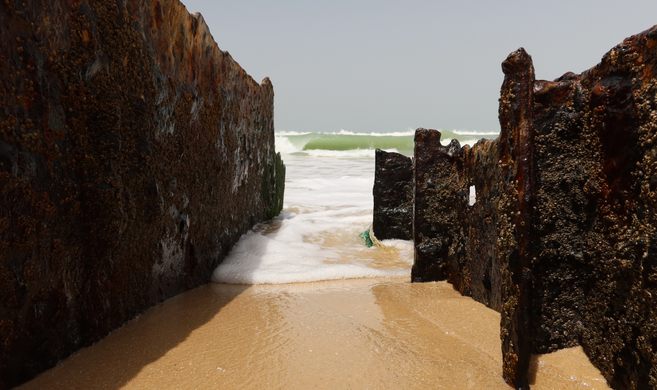
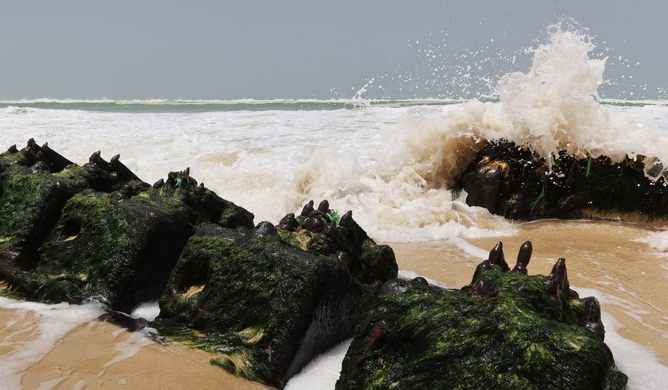
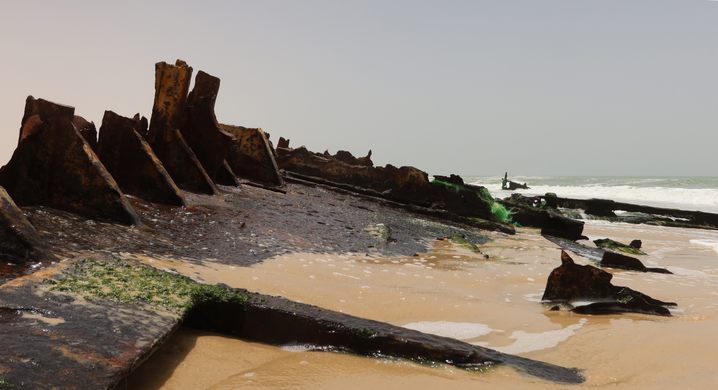

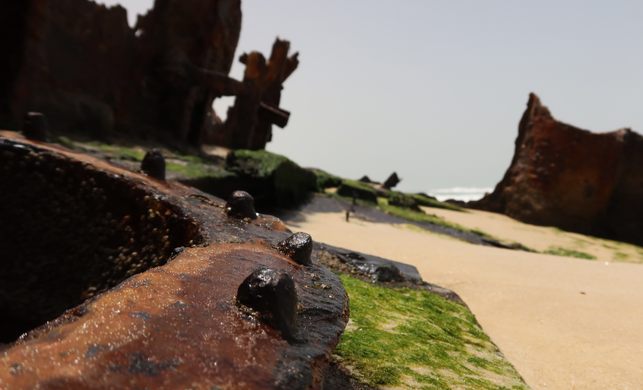
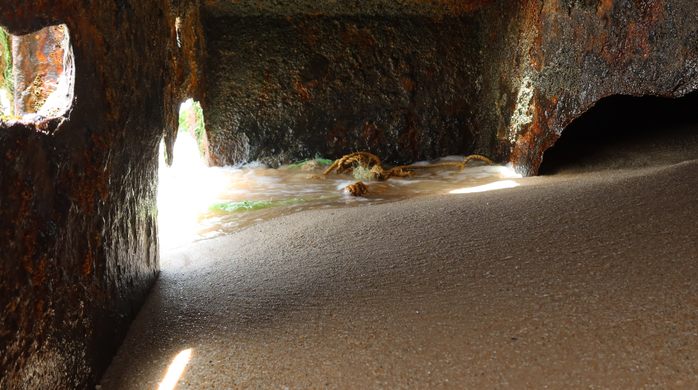
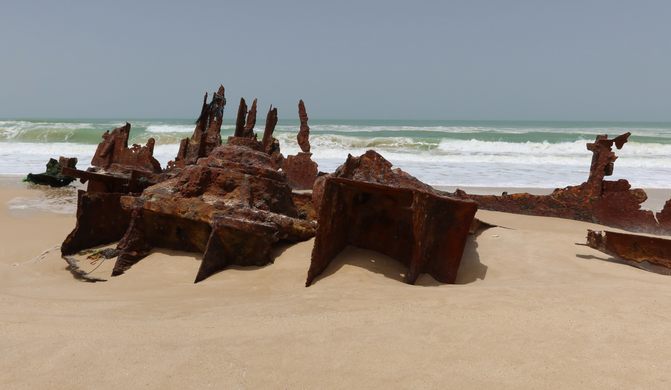
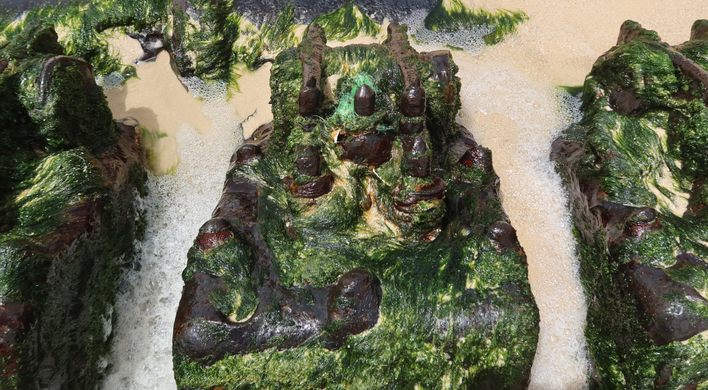
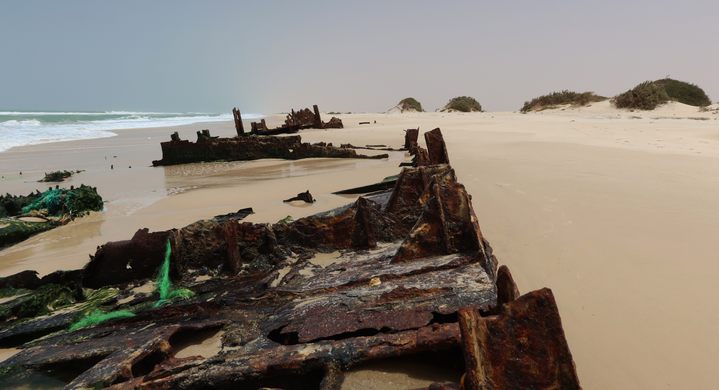
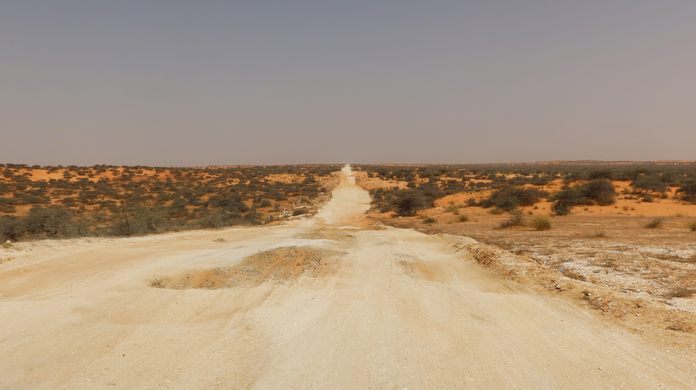






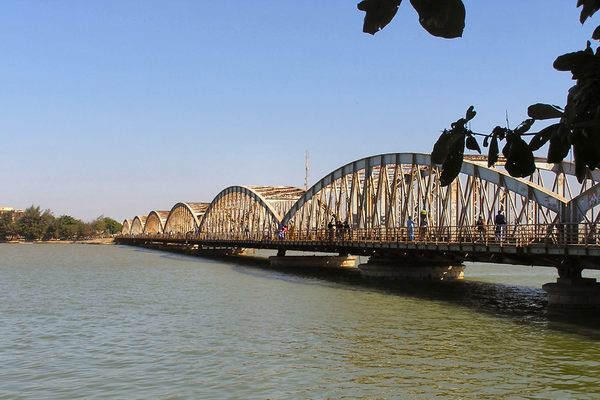
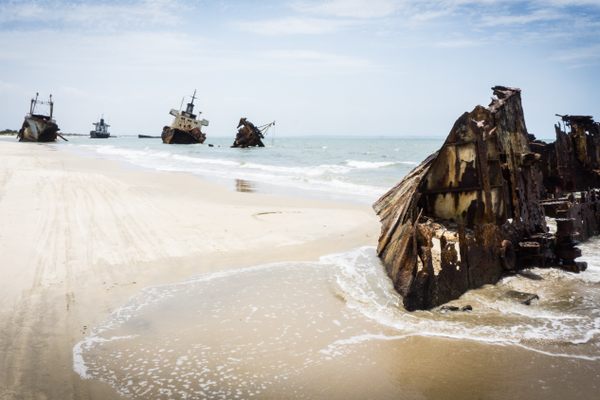

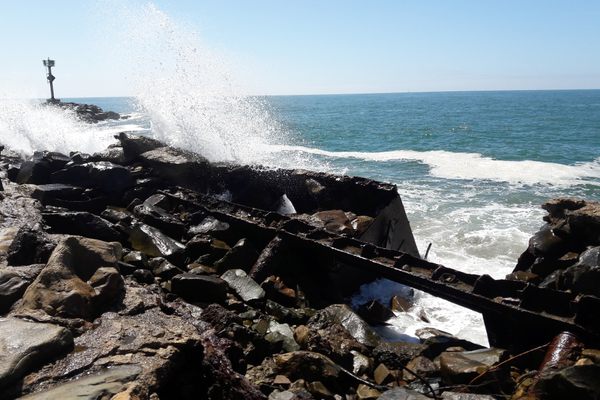


Follow us on Twitter to get the latest on the world's hidden wonders.
Like us on Facebook to get the latest on the world's hidden wonders.
Follow us on Twitter Like us on Facebook